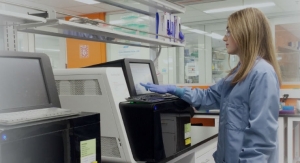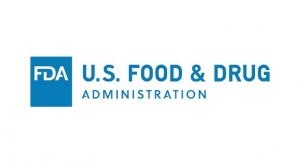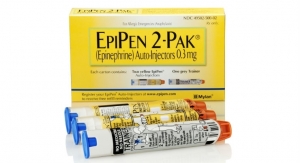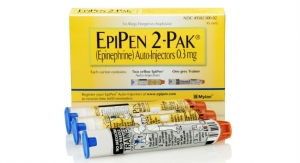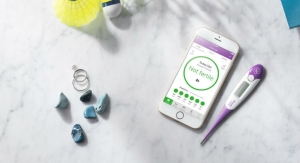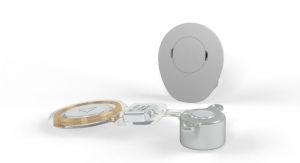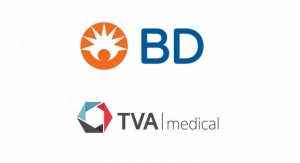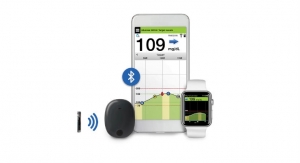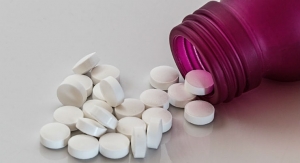U.S. Food and Drug Administration11.26.18
Forty-two years ago, Congress passed the law establishing the framework for evaluating the safety and effectiveness of medical devices. Today, we’re announcing changes to modernize the FDA’s 510(k) clearance pathway, which accounts for the majority of devices that the FDA reviews. We’re pursuing these changes to help keep pace with the increasing complexity of rapidly evolving technology. The new technology that we’re seeing holds tremendous public health promise for patients. But with the advances also come new complexities that can make the review of safety and effectiveness more challenging. The framework we propose is aimed at efficiently advancing beneficial technology to patients, while solidifying FDA’s gold standard for safety.
We believe that where appropriate, new medical devices that come to market under the 510(k) pathway should either account for advances in technology or demonstrate that they meet more modern safety and performance criteria. We want to make sure that new devices are evaluated against advances in technology that can improve patient safety and performance. In making these reviews, where appropriate, we want to rely on modern safety and performance criteria. At the same time, we’re going to pursue additional actions that will allow the FDA to retire outdated predicates, especially in cases where we’ve seen safer or more effective technology emerge.
We believe firmly in the merits of the 510(k) process. But we also believe that framework needs to be modernized to reflect advances in technology, safety and the capabilities of a new generation of medical devices. In short, we believe that it’s time to fundamentally modernize an approach first adopted in 1976, when Congress considered the vast diversity of devices that would become subject to the FDA’s regulatory oversight and established many of the predicate devices that served as the basis for 510(k) clearances during the last 40 years.
The 510(k) process allows the FDA to recognize that medical devices exist across a continuum of complexity and risk and that the scope of premarket review should reflect this risk continuum. This is a contemporary approach to regulation. A one-size-fits-all regulatory approach wouldn’t optimize public health outcomes, wouldn’t be efficient in advancing beneficial new technologies to patients, and wouldn’t allow the FDA to effectively prioritize its scientific resources.
Congress’s creation of the 510(k) process was a paradigm shift from the FDA’s regulation of drugs. It recognized the distinct challenges of regulating such a broad, diverse group of medical products. Today, the FDA regulates more than 190,000 distinct devices. Although the regulatory approach to devices is different than for drugs, the public health objective—assuring that all medical products meet the FDA’s standards for safety and effectiveness—is the same.
The 510(k) pathway represents a more contemporary approach to the risk-based regulation of medical products, but this doesn’t mean the pathway is perfect or not in need of change.
The staff of the FDA’s Center for Devices and Radiological Health (CDRH) has leveraged this risk-based paradigm to develop innovative and forward-leaning regulatory policy that meets our gold standard for safety and effectiveness. In recent months, we’ve taken many new steps to advance these goals. Many of these efforts aim at adopting a more modern process that allows the FDA to more readily incorporate new technologies that improve the safety and performance of medical devices into new predicates to serve as benchmarks for future clearances.
Some of the recent innovative policies include efforts to promote the use of real world evidence in regulatory decision-making; to modernize the De-Novo pathway for low to moderate risk novel devices; to enable the use of rigorous, consensus objective criteria to serve as a predicate for future clearances; to build a national patient safety net; to re-envision a regulatory paradigm for digital health products and in vitro diagnostics; and to chart a premarket review path for breakthrough products. At the same time, we’ve also advanced pathways that can help enable timely patient access to new, innovative and potentially transformative medical devices to help safely treat devastating diseases. For instance, we’ve promoted new ways to safely advance medical devices to diagnose cancer, repair damaged hearts and manage diabetes.
Advances in material science, digital health, 3D printing and other technologies continue to drive an unparalleled period of invention in medical devices. It’s vital that the FDA’s regulatory approach continue to evolve and modernize to safely and efficiently advance these opportunities. Not only must we keep pace with this complexity and innovation, but we must also stay ahead of the new and evolving risks that sometimes accompany this progress.
That’s why, this past April, FDA issued its Medical Device Safety Action Plan: Protecting Patients, Promoting Public Health. We recognized that there were opportunities for us to continue to enhance our programs to help improve device safety. Our policy ideas spanned the life cycle for devices, including ways to drive innovation of safer devices premarket, and enhance post market patient safety. We’ve made significant progress to advance that plan.
Modernizing the 510(k) Pathway
As part of the Safety Action Plan, we committed to strengthen and modernize the 510(k) program. This is a pathway used for clearance of low- to moderate-risk devices that are substantially equivalent to a device already on the market—otherwise known as a predicate device.
FDA’s 510(k) program is the most commonly used device premarket review pathway. In 2017, CDRH cleared 3,173 devices through the 510(k) pathway, representing 82 percent of the total devices cleared or approved. The 510(k) program has been strengthened and refined in many ways. This has been especially true in recent years, as CDRH made a systematic, concerted effort to improve the program’s performance, predictability, efficiency and safety.
Today, following the close of the public comment period and our review of the feedback on the Safety Action Plan, we’re announcing new steps and proposed actions to substantially build on these efforts. We’re focusing on new policy efforts that we plan to advance to help the 510(k) program keep pace with innovation, promote modern patient care and match our evolving understanding of benefits and risks. Our new plans are aimed at continuing to ensure that new and existing devices meet our gold standard for safety and effectiveness as technology rapidly advances.
The most impactful way that we can promote innovation and improved safety in the 510(k) program is to drive innovators toward reliance on more modern predicate devices or objective performance criteria when they seek to bring new devices to patients.
In the 510(k) pathway, manufacturers generally rely on comparative testing against predicate devices to show that a new device is as safe and effective as the predicate device. Older predicates might not closely reflect the modern technology embedded in new devices, or our more current understanding of device benefits and risks. In some cases, the predicate could be decades old. Data show that nearly 20 percent of current 510(k)s are cleared based on a predicate that’s more than 10 years old. That doesn’t mean the products are unsafe. But it does mean that some devices may not be continually improving, which is the hallmark of health technologies.
We believe that newer devices should be compared to the benefits and risks of more modern technology; that is why we’re looking at ways to promote the use of more recent predicates. To advance these goals, in the next few months CDRH is considering making public on its website those cleared devices that demonstrated substantial equivalence to older predicate devices. We’re considering focusing on predicates that are more than 10 years old as a starting point, so that the public is aware of those technologies. Our goal in focusing on older predicates is to drive sponsors to continually offer patients devices with the latest improvements and advances.
Before proceeding, we’ll seek public feedback on whether we should make public those devices or those manufacturers who make technologies that rely on predicates that are more than 10 years old, whether other criteria should inform our point of reference, and whether there are other actions we should take to promote the use of more modern predicates. To be clear, we don’t believe devices that rely on old predicates are unsafe, or that older devices need to be removed from the market. However, we believe that encouraging product developers to use more modern predicates would give patients and their doctors a choice among older and newer versions of a type of device, promote greater competition to adopt modern features that improve safety and performance, and help make sure that newer devices reflect more modern technology and standards that can improve patient care and outcomes. It would help the overall product environment continue to evolve in the direction toward more modern performance standards.
This market-based approach will promote the right kind of innovation for patients. Innovation that reflects the most modern principles. Among other steps, we’re developing proposals to potentially sunset certain older predicates and promote the use of more modern predicates. We’ll consider whether this approach should become a requirement in the future. To achieve some of these public health goals, we may need to seek additional guidance from Congress.
We’re considering this approach because the devices we review through the 510(k) program are increasingly complex. They often involve different technological features from the predicates on which they’re based. Newer devices are more often interconnected and interoperable, increasing cybersecurity threats. Miniaturization of device components has allowed devices to become smaller and more portable. Devices more frequently use automation and robotics, and advanced materials, changing the way healthcare providers and patients interact with them.
To keep pace with these developments and advance these goals, in early 2019, FDA intends to finalize guidance establishing an alternative 510(k) pathway that allows manufacturers of certain well-understood device types to rely on objective safety and performance criteria to demonstrate substantial equivalence as a way to make it more efficient to adopt modern criteria as the basis for the predicates that are used to support new products. Our goal in finalizing this pathway that we discussed in our Medical Device Safety Action Plan is to expand its use broadly across the 510(k) program and make it the primary pathway for devices eligible for 510(k) review.
We believe this approach is the future of the 510(k) program. Rather than looking to the past as a baseline for safety and effectiveness—and rely on predicate devices that are sometimes decades old as our point of comparison—our premarket review would be based on a contemporary baseline that looks to the future and a baseline that can be updated as technologies advance. Sometimes, by relying on old predicates, it can actually make it more difficult for more advanced technology to reach patients since it’s harder for an innovative product to bridge to an outdated technology reflected in a decades-old predicate. Our new proposed approach enables us to help improve safety and performance, as appropriate, and ensure new products can more easily reflect beneficial new advances.
We’re planning to rename this new approach the “Safety and Performance Based Pathway” to reflect its focus on advancing improved safety and performance of new products. Through this new path, a company would demonstrate that a novel device meets modern performance-based criteria that have been established or recognized by the FDA and reflect current technological principles. These criteria would reflect the safety and performance of modern predicate devices. We’d like this efficient new pathway to eventually supplant the practice of manufacturers comparing their new device technologically to a specific, and sometimes old, predicate device.
This modern framework is a direct and transparent approach to demonstrating the safety and effectiveness of low to moderate risk devices. This alternative pathway to substantial equivalence would provide more direct evidence of the safety and performance of a device and better information for patients and providers to make well-informed health care decisions. In addition, with this new approach, the FDA may drive greater market competition to develop safer devices. Manufacturers would be able to demonstrate that their products meet or exceed objective safety and performance criteria that are based on modern technological principles. And companies could also, for the purposes of supporting coverage decisions, more readily demonstrate to payors that their products perform better than other devices on the market.
Promoting Greater Transparency and Post-Market Surveillance
We’re proposing these changes after accounting for all of the improvements to our 510(k) review in recent years. Today, we are posting a performance report that highlights some of the key achievements of the past decade, including the measures taken to increase the predictability and transparency of the 510(k) review process. These efforts include the more than 50 final guidance documents on important medical device policy issues that we’ve issued since 2009.
Importantly, we’ve increased expectations for the quality and quantity of information required in 510(k) submissions, resulting in a more than doubling of the size of submissions—now, an average of 1,185 pages, compared to 475 pages in 2009. And while our reviewers have spent more time reviewing applications during this same period—an increase of about 32 percent—the average total time for the agency to reach a decision has decreased, reflecting a more robust and efficient program. These metrics reflect not only the strengthening of the medical device review program, but also the dedication of the talented CDRH career staff in carrying out our public health mission and continuing to drive forward critical program enhancements.
We recognize that our approach as regulators must continue to evolve, to anticipate and meet the challenges and opportunities of the coming decades. We must look ahead. We not only have to skate to where the puck will be, we also need to drive the puck to where it should be.
Even by taking these proactive, forward-looking actions, there will be devices that appropriately come to market that we will learn—with further use and experience—pose a new risk or a greater frequency of a known risk. CDRH has made significant strides towards enhancing our nation’s post-market surveillance systems to be able include active surveillance capabilities.
Last week, we described the progress that has been made to build and launch the National Evaluation System for health Technology (or NEST) and the plans that are underway to focus specifically on active surveillance as well as on women’s health devices by strengthening and leveraging the Women’s Health Technologies Coordinated Registry Network. We announced new resources to support these efforts. Based on these and other steps to link different real world sources of information to actively generate data about real world device performance, we’re committing to a new strategic goal: Ensuring that the FDA is consistently first among the world’s regulatory agencies to identify and act upon safety signals related to medical devices.
In the past several years, CDRH has also worked actively to eliminate the use of 510(k)-cleared predicates when the devices raised safety concerns that warranted treating them as high-risk technologies. These efforts will continue. Through a process known as “up-classifying”—meaning that we are re-assigning a device to Class III and requiring premarket approval, our most stringent review pathway, before a device can remain on the market—we can and have made ineligible the use of certain devices as legal predicates. Specific examples include the upclassification of previously cleared 510(k)s for vaginal mesh for the treatment of pelvic organ prolapse, automated external defibrillators, and metal-on-metal hip implants. These devices are higher risk and can no longer be brought to market via the 510(k) pathway.
In fact, since Congress enacted the Medical Device Amendments in 1976, the FDA has made the use of 1,758 devices ineligible as predicates in the 510(k) process. Of these, 1,477 (84 percent) have been upclassified since 2012, reflecting our recent and more aggressive approach to using this authority as the underlying technology of products improves and we develop new information about the safety of existing products. The opportunities offered by more modern innovation can often improve product safety. Most device types we’ve reclassified into class III are older technologies that did not reflect modern standards of safety and effectiveness.
But the regulatory process of up-classifying devices is time- and resource-intensive, and not a good fit for swift action in response to safety concerns. Other tools at our disposal may also be inefficient. For instance, the FDA may determine a need to impose new special controls on a type of 510(k) device, such as new labeling or restrictions on its sale, in response to safety concerns. But this process, which involves rule-making on a case-by-case basis, is lengthy and inefficient, making it challenging to implement necessary safety mitigations in a timely way.
In these situations, we often engage with the manufacturers intensively to encourage them to take the necessary voluntary actions to mitigate a risk. While that approach is generally effective, that solution can be inefficient. And some manufacturers may refuse to cooperate.
In addition, some safety concerns are “cross-cutting” and impact numerous device types. For instance, we’ve seen inadequate reprocessing of reusable devices, such as certain scopes, which can lead to device contamination and patient infections. Misconnections for several device types, such as small-bore connectors, has resulted in death, serious injuries and device malfunctions. While the FDA has taken appropriate action in these cases, they demonstrate how the current regulatory process for implementing special controls to enhance device safety is simply not agile enough to address time-sensitive public health issues.
Thus, we believe that additional changes are needed to fully modernize the 510(k) program.
After careful review of our ability to impose special controls to better protect patients, we believe that more streamlined processes would improve FDA’s ability to implement new special controls to address safety concerns more quickly, as well as to up-classify a device type, where appropriate, in response to a safety concern. These refinements to FDA’s approach would complement our work on NEST by allowing us to more rapidly require appropriate mitigations in response to an identified safety issue. We look forward to continuing to engage with Congress and stakeholders about potential proposals to address these patient safety needs.
As a result of our 510(k) policy proposals, we also believe that more devices will use the De Novo pathway, which permits a robust evaluation of novel devices and allows the FDA to establish special controls for devices of the same type. In the next few weeks, we plan to issue a proposed rule clarifying procedures and requirements for submissions of De Novo requests, further advancing our efforts to establish a regulatory framework that sets clear standards, expectations and processes for De Novo classification as a way to continue to modernize the 510(k) process.
We know that some of these proposals may require additional support from Congress. But we believe that these are the right steps to advance safety and innovation, and we’re committed to these ideas and committed to working with stakeholders to continue to modernize our policies.
The technological advances in medical devices and their ability to improve the lives of patients are creating tremendous public health promise. But as physicians, we also understand the real harm that devices may cause if they malfunction, are misused, or are made of poor quality.
The continued integrity of the 510(k) program, as a means to assure the safety and effectiveness of devices, is a top priority for us, and for the FDA. Part of our commitment to protect patients is to recognize that all devices pose benefits and risks, and to seek ways to minimize those risks.
We’re seizing the chance to make a generational change in the framework for 510(k) reviews—one that advances its best features while making sure it keeps pace with modern innovation.
In the coming weeks, we’ll provide additional updates on the status of our Medical Device Safety Action Plan and describe further steps we’re taking to promote patient safety. We’re proud of the work CDRH staff is doing to make sure that the devices we regulate are safe. We’ll continue to take new actions to strengthen the device program for the years to come.
We believe that where appropriate, new medical devices that come to market under the 510(k) pathway should either account for advances in technology or demonstrate that they meet more modern safety and performance criteria. We want to make sure that new devices are evaluated against advances in technology that can improve patient safety and performance. In making these reviews, where appropriate, we want to rely on modern safety and performance criteria. At the same time, we’re going to pursue additional actions that will allow the FDA to retire outdated predicates, especially in cases where we’ve seen safer or more effective technology emerge.
We believe firmly in the merits of the 510(k) process. But we also believe that framework needs to be modernized to reflect advances in technology, safety and the capabilities of a new generation of medical devices. In short, we believe that it’s time to fundamentally modernize an approach first adopted in 1976, when Congress considered the vast diversity of devices that would become subject to the FDA’s regulatory oversight and established many of the predicate devices that served as the basis for 510(k) clearances during the last 40 years.
The 510(k) process allows the FDA to recognize that medical devices exist across a continuum of complexity and risk and that the scope of premarket review should reflect this risk continuum. This is a contemporary approach to regulation. A one-size-fits-all regulatory approach wouldn’t optimize public health outcomes, wouldn’t be efficient in advancing beneficial new technologies to patients, and wouldn’t allow the FDA to effectively prioritize its scientific resources.
Congress’s creation of the 510(k) process was a paradigm shift from the FDA’s regulation of drugs. It recognized the distinct challenges of regulating such a broad, diverse group of medical products. Today, the FDA regulates more than 190,000 distinct devices. Although the regulatory approach to devices is different than for drugs, the public health objective—assuring that all medical products meet the FDA’s standards for safety and effectiveness—is the same.
The 510(k) pathway represents a more contemporary approach to the risk-based regulation of medical products, but this doesn’t mean the pathway is perfect or not in need of change.
The staff of the FDA’s Center for Devices and Radiological Health (CDRH) has leveraged this risk-based paradigm to develop innovative and forward-leaning regulatory policy that meets our gold standard for safety and effectiveness. In recent months, we’ve taken many new steps to advance these goals. Many of these efforts aim at adopting a more modern process that allows the FDA to more readily incorporate new technologies that improve the safety and performance of medical devices into new predicates to serve as benchmarks for future clearances.
Some of the recent innovative policies include efforts to promote the use of real world evidence in regulatory decision-making; to modernize the De-Novo pathway for low to moderate risk novel devices; to enable the use of rigorous, consensus objective criteria to serve as a predicate for future clearances; to build a national patient safety net; to re-envision a regulatory paradigm for digital health products and in vitro diagnostics; and to chart a premarket review path for breakthrough products. At the same time, we’ve also advanced pathways that can help enable timely patient access to new, innovative and potentially transformative medical devices to help safely treat devastating diseases. For instance, we’ve promoted new ways to safely advance medical devices to diagnose cancer, repair damaged hearts and manage diabetes.
Advances in material science, digital health, 3D printing and other technologies continue to drive an unparalleled period of invention in medical devices. It’s vital that the FDA’s regulatory approach continue to evolve and modernize to safely and efficiently advance these opportunities. Not only must we keep pace with this complexity and innovation, but we must also stay ahead of the new and evolving risks that sometimes accompany this progress.
That’s why, this past April, FDA issued its Medical Device Safety Action Plan: Protecting Patients, Promoting Public Health. We recognized that there were opportunities for us to continue to enhance our programs to help improve device safety. Our policy ideas spanned the life cycle for devices, including ways to drive innovation of safer devices premarket, and enhance post market patient safety. We’ve made significant progress to advance that plan.
Modernizing the 510(k) Pathway
As part of the Safety Action Plan, we committed to strengthen and modernize the 510(k) program. This is a pathway used for clearance of low- to moderate-risk devices that are substantially equivalent to a device already on the market—otherwise known as a predicate device.
FDA’s 510(k) program is the most commonly used device premarket review pathway. In 2017, CDRH cleared 3,173 devices through the 510(k) pathway, representing 82 percent of the total devices cleared or approved. The 510(k) program has been strengthened and refined in many ways. This has been especially true in recent years, as CDRH made a systematic, concerted effort to improve the program’s performance, predictability, efficiency and safety.
Today, following the close of the public comment period and our review of the feedback on the Safety Action Plan, we’re announcing new steps and proposed actions to substantially build on these efforts. We’re focusing on new policy efforts that we plan to advance to help the 510(k) program keep pace with innovation, promote modern patient care and match our evolving understanding of benefits and risks. Our new plans are aimed at continuing to ensure that new and existing devices meet our gold standard for safety and effectiveness as technology rapidly advances.
The most impactful way that we can promote innovation and improved safety in the 510(k) program is to drive innovators toward reliance on more modern predicate devices or objective performance criteria when they seek to bring new devices to patients.
In the 510(k) pathway, manufacturers generally rely on comparative testing against predicate devices to show that a new device is as safe and effective as the predicate device. Older predicates might not closely reflect the modern technology embedded in new devices, or our more current understanding of device benefits and risks. In some cases, the predicate could be decades old. Data show that nearly 20 percent of current 510(k)s are cleared based on a predicate that’s more than 10 years old. That doesn’t mean the products are unsafe. But it does mean that some devices may not be continually improving, which is the hallmark of health technologies.
We believe that newer devices should be compared to the benefits and risks of more modern technology; that is why we’re looking at ways to promote the use of more recent predicates. To advance these goals, in the next few months CDRH is considering making public on its website those cleared devices that demonstrated substantial equivalence to older predicate devices. We’re considering focusing on predicates that are more than 10 years old as a starting point, so that the public is aware of those technologies. Our goal in focusing on older predicates is to drive sponsors to continually offer patients devices with the latest improvements and advances.
Before proceeding, we’ll seek public feedback on whether we should make public those devices or those manufacturers who make technologies that rely on predicates that are more than 10 years old, whether other criteria should inform our point of reference, and whether there are other actions we should take to promote the use of more modern predicates. To be clear, we don’t believe devices that rely on old predicates are unsafe, or that older devices need to be removed from the market. However, we believe that encouraging product developers to use more modern predicates would give patients and their doctors a choice among older and newer versions of a type of device, promote greater competition to adopt modern features that improve safety and performance, and help make sure that newer devices reflect more modern technology and standards that can improve patient care and outcomes. It would help the overall product environment continue to evolve in the direction toward more modern performance standards.
This market-based approach will promote the right kind of innovation for patients. Innovation that reflects the most modern principles. Among other steps, we’re developing proposals to potentially sunset certain older predicates and promote the use of more modern predicates. We’ll consider whether this approach should become a requirement in the future. To achieve some of these public health goals, we may need to seek additional guidance from Congress.
We’re considering this approach because the devices we review through the 510(k) program are increasingly complex. They often involve different technological features from the predicates on which they’re based. Newer devices are more often interconnected and interoperable, increasing cybersecurity threats. Miniaturization of device components has allowed devices to become smaller and more portable. Devices more frequently use automation and robotics, and advanced materials, changing the way healthcare providers and patients interact with them.
To keep pace with these developments and advance these goals, in early 2019, FDA intends to finalize guidance establishing an alternative 510(k) pathway that allows manufacturers of certain well-understood device types to rely on objective safety and performance criteria to demonstrate substantial equivalence as a way to make it more efficient to adopt modern criteria as the basis for the predicates that are used to support new products. Our goal in finalizing this pathway that we discussed in our Medical Device Safety Action Plan is to expand its use broadly across the 510(k) program and make it the primary pathway for devices eligible for 510(k) review.
We believe this approach is the future of the 510(k) program. Rather than looking to the past as a baseline for safety and effectiveness—and rely on predicate devices that are sometimes decades old as our point of comparison—our premarket review would be based on a contemporary baseline that looks to the future and a baseline that can be updated as technologies advance. Sometimes, by relying on old predicates, it can actually make it more difficult for more advanced technology to reach patients since it’s harder for an innovative product to bridge to an outdated technology reflected in a decades-old predicate. Our new proposed approach enables us to help improve safety and performance, as appropriate, and ensure new products can more easily reflect beneficial new advances.
We’re planning to rename this new approach the “Safety and Performance Based Pathway” to reflect its focus on advancing improved safety and performance of new products. Through this new path, a company would demonstrate that a novel device meets modern performance-based criteria that have been established or recognized by the FDA and reflect current technological principles. These criteria would reflect the safety and performance of modern predicate devices. We’d like this efficient new pathway to eventually supplant the practice of manufacturers comparing their new device technologically to a specific, and sometimes old, predicate device.
This modern framework is a direct and transparent approach to demonstrating the safety and effectiveness of low to moderate risk devices. This alternative pathway to substantial equivalence would provide more direct evidence of the safety and performance of a device and better information for patients and providers to make well-informed health care decisions. In addition, with this new approach, the FDA may drive greater market competition to develop safer devices. Manufacturers would be able to demonstrate that their products meet or exceed objective safety and performance criteria that are based on modern technological principles. And companies could also, for the purposes of supporting coverage decisions, more readily demonstrate to payors that their products perform better than other devices on the market.
Promoting Greater Transparency and Post-Market Surveillance
We’re proposing these changes after accounting for all of the improvements to our 510(k) review in recent years. Today, we are posting a performance report that highlights some of the key achievements of the past decade, including the measures taken to increase the predictability and transparency of the 510(k) review process. These efforts include the more than 50 final guidance documents on important medical device policy issues that we’ve issued since 2009.
Importantly, we’ve increased expectations for the quality and quantity of information required in 510(k) submissions, resulting in a more than doubling of the size of submissions—now, an average of 1,185 pages, compared to 475 pages in 2009. And while our reviewers have spent more time reviewing applications during this same period—an increase of about 32 percent—the average total time for the agency to reach a decision has decreased, reflecting a more robust and efficient program. These metrics reflect not only the strengthening of the medical device review program, but also the dedication of the talented CDRH career staff in carrying out our public health mission and continuing to drive forward critical program enhancements.
We recognize that our approach as regulators must continue to evolve, to anticipate and meet the challenges and opportunities of the coming decades. We must look ahead. We not only have to skate to where the puck will be, we also need to drive the puck to where it should be.
Even by taking these proactive, forward-looking actions, there will be devices that appropriately come to market that we will learn—with further use and experience—pose a new risk or a greater frequency of a known risk. CDRH has made significant strides towards enhancing our nation’s post-market surveillance systems to be able include active surveillance capabilities.
Last week, we described the progress that has been made to build and launch the National Evaluation System for health Technology (or NEST) and the plans that are underway to focus specifically on active surveillance as well as on women’s health devices by strengthening and leveraging the Women’s Health Technologies Coordinated Registry Network. We announced new resources to support these efforts. Based on these and other steps to link different real world sources of information to actively generate data about real world device performance, we’re committing to a new strategic goal: Ensuring that the FDA is consistently first among the world’s regulatory agencies to identify and act upon safety signals related to medical devices.
In the past several years, CDRH has also worked actively to eliminate the use of 510(k)-cleared predicates when the devices raised safety concerns that warranted treating them as high-risk technologies. These efforts will continue. Through a process known as “up-classifying”—meaning that we are re-assigning a device to Class III and requiring premarket approval, our most stringent review pathway, before a device can remain on the market—we can and have made ineligible the use of certain devices as legal predicates. Specific examples include the upclassification of previously cleared 510(k)s for vaginal mesh for the treatment of pelvic organ prolapse, automated external defibrillators, and metal-on-metal hip implants. These devices are higher risk and can no longer be brought to market via the 510(k) pathway.
In fact, since Congress enacted the Medical Device Amendments in 1976, the FDA has made the use of 1,758 devices ineligible as predicates in the 510(k) process. Of these, 1,477 (84 percent) have been upclassified since 2012, reflecting our recent and more aggressive approach to using this authority as the underlying technology of products improves and we develop new information about the safety of existing products. The opportunities offered by more modern innovation can often improve product safety. Most device types we’ve reclassified into class III are older technologies that did not reflect modern standards of safety and effectiveness.
But the regulatory process of up-classifying devices is time- and resource-intensive, and not a good fit for swift action in response to safety concerns. Other tools at our disposal may also be inefficient. For instance, the FDA may determine a need to impose new special controls on a type of 510(k) device, such as new labeling or restrictions on its sale, in response to safety concerns. But this process, which involves rule-making on a case-by-case basis, is lengthy and inefficient, making it challenging to implement necessary safety mitigations in a timely way.
In these situations, we often engage with the manufacturers intensively to encourage them to take the necessary voluntary actions to mitigate a risk. While that approach is generally effective, that solution can be inefficient. And some manufacturers may refuse to cooperate.
In addition, some safety concerns are “cross-cutting” and impact numerous device types. For instance, we’ve seen inadequate reprocessing of reusable devices, such as certain scopes, which can lead to device contamination and patient infections. Misconnections for several device types, such as small-bore connectors, has resulted in death, serious injuries and device malfunctions. While the FDA has taken appropriate action in these cases, they demonstrate how the current regulatory process for implementing special controls to enhance device safety is simply not agile enough to address time-sensitive public health issues.
Thus, we believe that additional changes are needed to fully modernize the 510(k) program.
After careful review of our ability to impose special controls to better protect patients, we believe that more streamlined processes would improve FDA’s ability to implement new special controls to address safety concerns more quickly, as well as to up-classify a device type, where appropriate, in response to a safety concern. These refinements to FDA’s approach would complement our work on NEST by allowing us to more rapidly require appropriate mitigations in response to an identified safety issue. We look forward to continuing to engage with Congress and stakeholders about potential proposals to address these patient safety needs.
As a result of our 510(k) policy proposals, we also believe that more devices will use the De Novo pathway, which permits a robust evaluation of novel devices and allows the FDA to establish special controls for devices of the same type. In the next few weeks, we plan to issue a proposed rule clarifying procedures and requirements for submissions of De Novo requests, further advancing our efforts to establish a regulatory framework that sets clear standards, expectations and processes for De Novo classification as a way to continue to modernize the 510(k) process.
We know that some of these proposals may require additional support from Congress. But we believe that these are the right steps to advance safety and innovation, and we’re committed to these ideas and committed to working with stakeholders to continue to modernize our policies.
The technological advances in medical devices and their ability to improve the lives of patients are creating tremendous public health promise. But as physicians, we also understand the real harm that devices may cause if they malfunction, are misused, or are made of poor quality.
The continued integrity of the 510(k) program, as a means to assure the safety and effectiveness of devices, is a top priority for us, and for the FDA. Part of our commitment to protect patients is to recognize that all devices pose benefits and risks, and to seek ways to minimize those risks.
We’re seizing the chance to make a generational change in the framework for 510(k) reviews—one that advances its best features while making sure it keeps pace with modern innovation.
In the coming weeks, we’ll provide additional updates on the status of our Medical Device Safety Action Plan and describe further steps we’re taking to promote patient safety. We’re proud of the work CDRH staff is doing to make sure that the devices we regulate are safe. We’ll continue to take new actions to strengthen the device program for the years to come.


